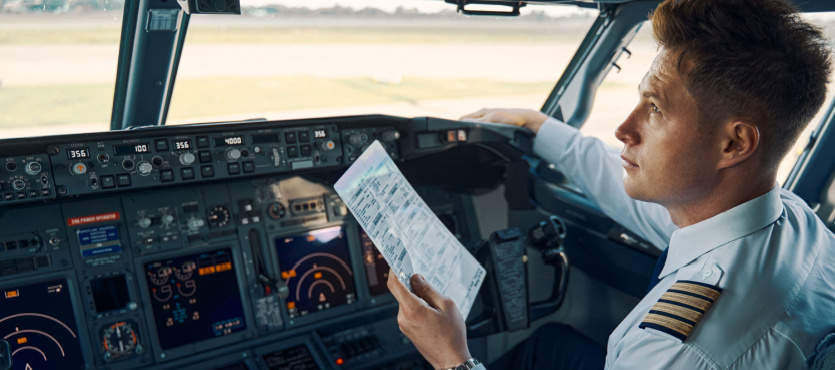Depending on your goals or the types of aircraft you wish to fly, there are different kinds of licenses you need to progress throughout your career as an aviator. With so many qualifications, ratings, and certificates to earn, it can be daunting to figure out what you need throughout your journey.
As you get farther into your training and career, you will begin to learn what each qualification covers and how to earn them; but the first thing to know is that certifications, also called licenses, are different from ratings. With that in mind, here are the six types of pilot licenses, according to the FAA, that you can earn.
Student Pilot License
Before you even start flying at your flight school, you will need a Student Pilot License. These are processed at your flight school by an administrator or instructor, and it is the first step in anyone’s journey to becoming a career aviator. The purpose behind acquiring this license is to identify the student as the pilot in command of the aircraft, which is necessary for logging hours and progressing toward qualifying for more advanced certifications.
Recreational Pilot License
The Recreational Pilot License is for anyone who wishes to fly for leisure and fun or those who want to fly aircraft that exceed the size limitations of a Sport Pilot License. Recreational pilots may only carry one passenger onboard and are limited to flying aircraft with 180 horsepower or less. This type of license is less common today, but it exists for those who fit the parameters of it and don’t wish to pursue more advanced training.
Sport Pilot License
Like a Recreational Pilot License, a Sport Pilot License is a limited certification that allows pilots to operate an aircraft with a max takeoff weight of 1320 pounds or less. Pilots with this license are limited to daylight operations, with seated limited to two. It is another option for those who wish to fly but do not want to progress further in their training.
Private Pilot License
Of the different licenses available to earn, the Private Pilot License is the most basic and most common among aspiring aviators. Training requirements are more intensive and prolonged when compared to recreational or sports licenses, but pilots with this certification can fly at night or in controlled airspace around airports.
With this certification, you have more opportunities to fly various aircrafts – making this the best license for many pilots looking to progress in their training. For most, this is the license to pursue.
Commercial Pilot License
If you wish to progress further and have a professional career in the aviation industry, then the license you will need to work towards is the Commercial Pilot License. This certification allows you to work for hire, but it comes with much more rigorous training and qualification demands – requiring utmost professionalism and precision. If you wish to fly complex aircraft with retractable landing gear and more, this is a license you will first need to earn and abide by federal aviation regulations.
Airline Pilot License
At the highest level of professional aviation is the Airline Pilot License. This license requires a minimum of 1500 flight hours, with 250 hours logged as the pilot in command. It is the most advanced license available to earn and is necessary if you want to fly commercial airliners as your career.
Flight School
Navigating all the hoops and hurdles to start flying recreationally or as a career can be a challenge, which is why picking the right school is crucial. At Airlink Flight School, we can help you prepare for a career in aviation through quality training materials and lessons from experts in the industry. Contact us today to learn more about our programs.

